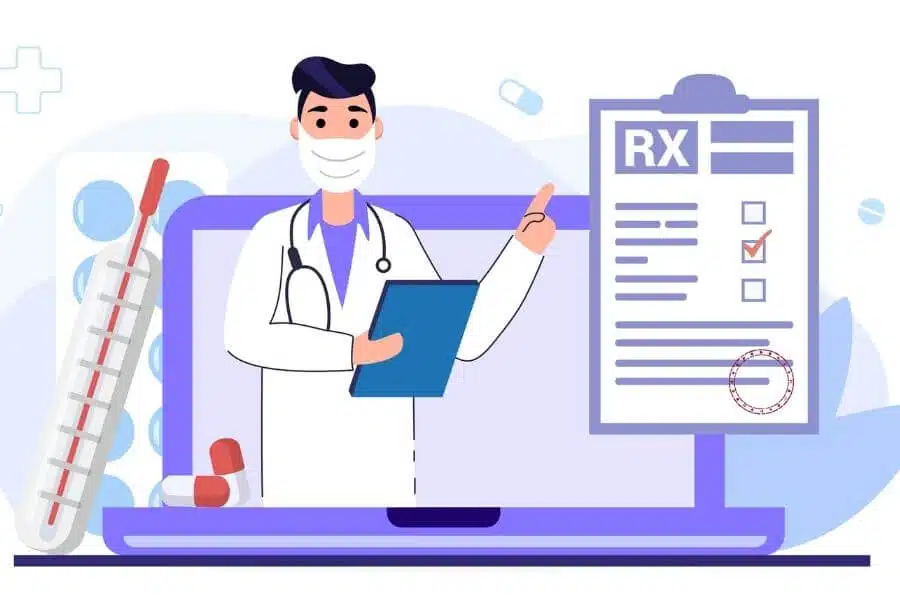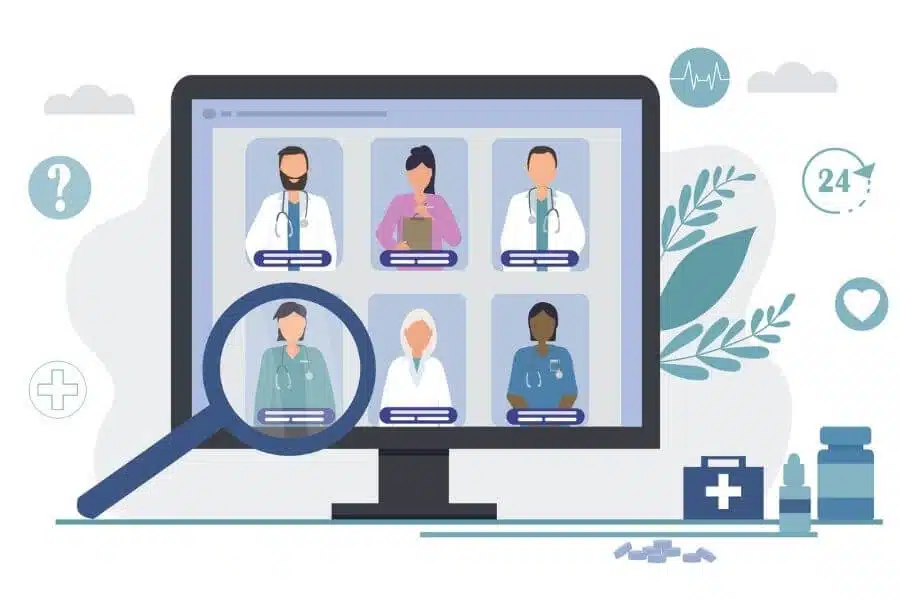
As we look ahead to what 2022 has in store for healthcare, we carry with us the realities of the past few years. So much has changed with how patient care is provided, but what remains is the presence of COVID-19, as new strains continue to emerge and present challenges for care delivery. Adaptability and creative solutions continue to be the way forward to both cope with the impact of the pandemic and prepare for a digitally-driven future. Because of the consumerization of healthcare – that is, patient behavior becoming consumer-like in how they “shop” for medical care – digital marketing strategies are no longer peripheral. Medical marketing strategies now dovetail with both the patient journey and staff recruitment.
As we approach this new year in patient care, our healthcare marketing experts urge medical practices to embrace how the digital experience has impacted and will continue to transform the patient journey. Now is also the time to revisit your approach to staffing, online medical reputation management, and local search visibility.
1.) Optimize the Patient Experience with Digital Front Door
Digital front door is a relatively new industry term used to describe a patient’s interaction with any aspect of the digital interface of a practice. Examples of this are online scheduling, virtual chatting with office staff, or even arranging rideshares to and from the clinic.
One key aspect of the consumerization of healthcare is leveraging digital tools to make the process easier and more streamlined for patients. The same conveniences consumers have come to expect from retailers and restaurants can and will be delivered in a similar manner for healthcare.
Now is the time to take stock of the digital assets you already have active and assess how each makes the online patient experience easier or harder. For example, our client websites feature online bill pay and patient portal access at the top of the home page to ensure these conveniences are readily accessed by patients. Patient surveys can gather feedback from users to help you identify your strengths and weaknesses with your online experience.
2.) Amplify Practice Culture to Attract the Best Staff
The Medical Group Management Association reports that healthcare leaders will be focusing on workforce challenges heading into 2022. 73% of those surveyed say that staffing is the biggest challenge they face as 2021 concludes.
With so many healthcare workers leaving the field, we can expect healthcare recruitment to be increasingly competitive. What’s more, being short-staffed is one of the major factors that contributes to employee attrition. For this reason, there lies the opportunity to assess the online presence of your medical practice and what kind of impression this makes on potential candidates.
Glassdoor reports that 75% of job seekers are inclined to apply to workplaces who actively manage the “employer brand,” meaning the reputation of the employer with regards to the employee experience. versus the customer experience. Maximizing your online presence to attract potential candidates includes online reputation management, website information, and social media activity.
Ways to improve your “employer brand” include encouraging employees to publish reviews online, and monitoring employee reviews on platforms like Glassdoor. Also crucial to your “brand” is that your medical website and social media accounts clearly present what makes your practice the better place to work: workplace culture, competitive compensation, exceptional patient care, and more.
3.) Recognize Online Reputation as a Top Asset
Nearly 90% of healthcare consumers will vet referrals by looking up a provider’s online ratings and reviews. Patients are heavily influenced by the opinions of others and will often narrow their options down to which practices have the best ratings.
While you have no control over what patients post online, you can be proactive with your online medical reputation management as part of your 2022 medical marketing strategy. This includes asking satisfied patients to post an online review about their experience. Responding to both positive and negative reviews made about your practice online whenever possible is also helpful.
7 out of 10 say that their opinion can change based on how the subject of the review replies to reviews. With online reputation being a chief consideration, if your practice has left your online reputation on autopilot, 2022 is the year to start paying more attention to your ratings, reviews, and overall public sentiment about your brand.
4.) Improve Engagement with Patient Journey Mapping & Personalization
Abbott reports that 72% of patients would like to have more personalized care. One way to approach personalization is to take account of the steps along the patient journey. The patient journey varies from practice to practice, but to provide a simplified version, it is the sequence of how the patient decides to seek care, choose a provider and continues care with the same practice.
Each point along the patient care journey is an opportunity to craft a more patient-centered and personalized approach. Examples of this are website content that addresses concerns specific to your patient niche, online assessments that customize care, and digital messaging (text, email, portal, etc.) that supports an individual care plan.
If your patients were to recount every detail of how they became your patient to this very day, what would that include? Each step along this journey is a potential area of improvement for the patient experience.
5.) Compete Effectively with Local Medical Listings
Another manifestation of the consumerization of healthcare is how heavily patients rely upon online search to find providers. One of the most commonly used online resources to find care is Google. The search terms patients use will automatically trigger localized search results from Google.
For your practice to have the best chance of being found in local search results for doctors, you need to take the following steps:
- Claim your Google My Business listing and complete it fully with the most accurate information.
- Ensure that all online directories have up to date information about your practice. There are over 60 directories out there such as Healthgrades, ZocDoc, WebMD, Doctorfinder, and more. Consistency among listings helps Google better learn the relevance of your practice for local search.
- Get more Google reviews. The more your rating improves, the better the chances of appearing first on what is called the Google “local pack” which is limited to three local listings on the initial search results.
Map Out Your 2022 Medical Marketing Strategies with the Pros
What medical practices love most about iHealthSpot is our customized medical website design, attentive client care, and how our medical marketing strategies attract new patients all year long.
Some practices are stumped on how to make their websites more engaging, and most would rather invest their time producing the best patient outcomes than in managing the nitty-gritty details of their online presence. iHealthSpot digital marketing experts take the reins of your practice marketing, so that you can keep the focus on your people. We support the patient journey by:
- Crafting a website that showcases how your practice is different. Each medical practice gets an engaging website unique to their brand and audience.
- Modernizing the online experience for patients with click-to-call phone number at the top of the website, as well as convenient amenities like online bill pay, portal access, appointment request forms, and the patient education library.
- Attracting the right patients and the best staff to care for them through online reputation management for doctors.
- Optimizing your online visibility with comprehensive provider online listings management (over 60 directories).
Getting started on your 2022 healthcare marketing plan is easy. Get a no-obligation consultation from iHealthSpot today – we are a full-service medical practice marketing agency trusted by over 4000 providers nationwide.







